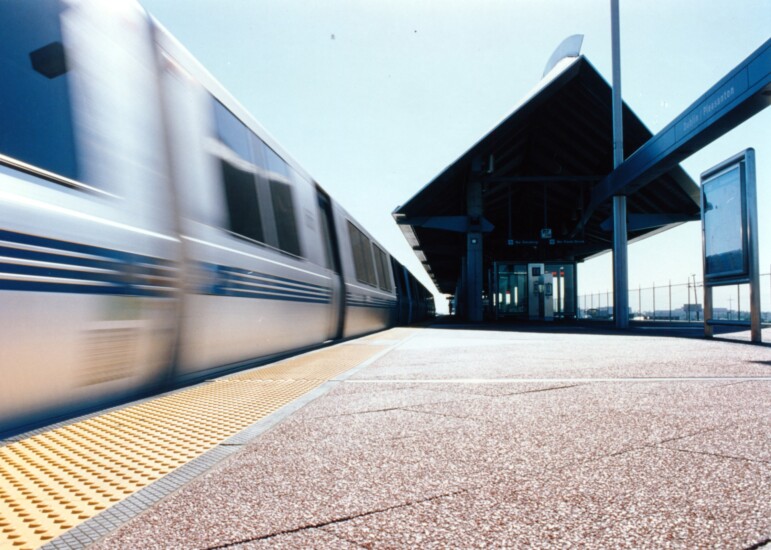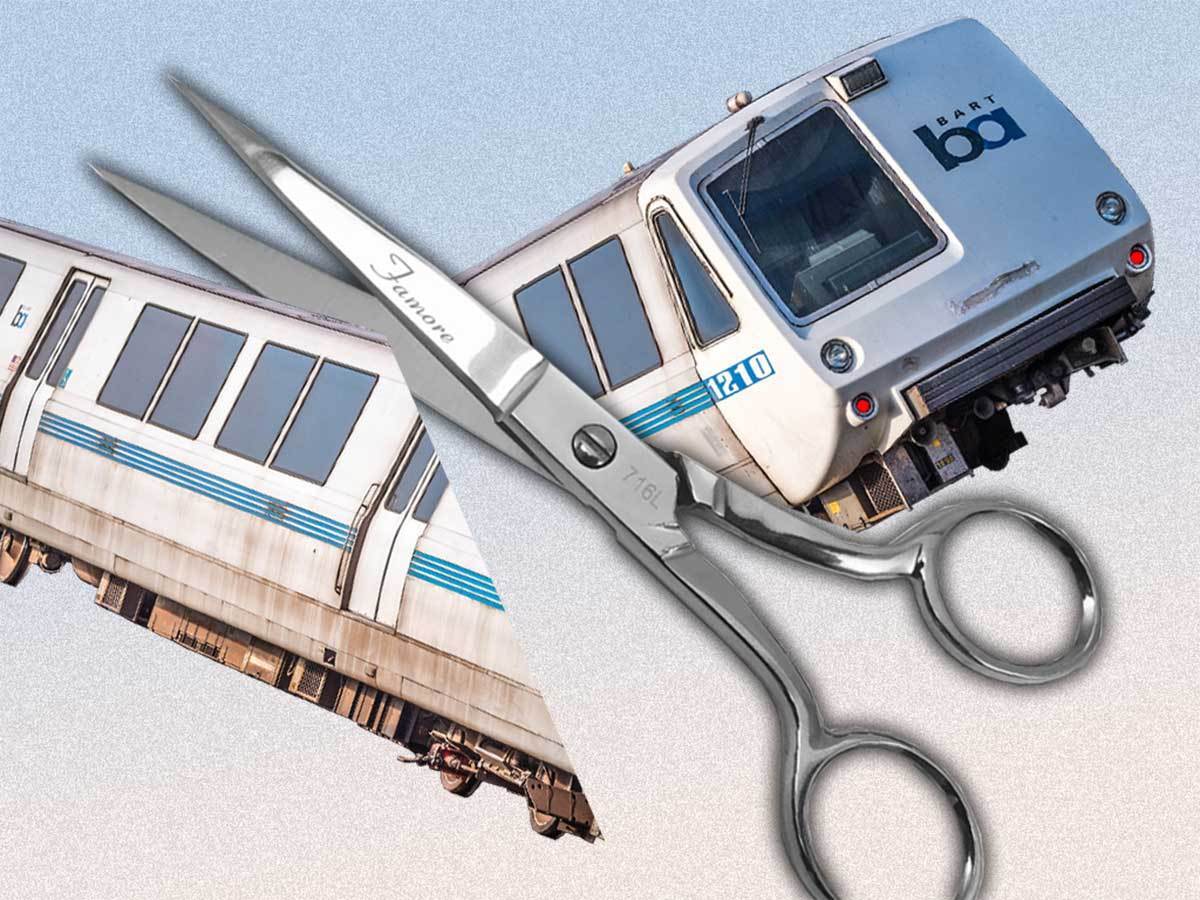Barring a sudden return to pre-pandemic ridership levels, BART’s long-term future will likely hinge on a future ballot measure that would partially subsidize the transit agency, officials said Thursday.
The San Francisco and San Jose metropolitan areas have the lowest office occupancy rates among the top-10 biggest metros in the country, with San Francisco sitting at just 20.8 percent according to badge swipe data from Kastle Security. By comparison, an average of 32.8 percent of office space is occupied among the 10 largest metro areas, which includes the two Bay Area cities as well as Los Angeles, New York, Chicago and Austin.
That lack of in-person workers, particularly in San Francisco, has punched a massive hole in BART’s annual revenue and the agency could soon cut service and close stations in the coming years as a result. Riders generated roughly $500 million per year pre-pandemic via fare revenue, but with weekday ridership regularly sitting between 30 and 40 percent of pre-pandemic expectations and no sign of a return to the ridership levels of the previous decade, BART is now aiming to close an annual budget gap of some $300 million.
“We built our budget around peak worker riders, and when they went away, it sort of broke our back, it broke the budget,” BART Board member Mark Foley said Thursday during a presentation by the agency’s budget and operations officials.
BART’s financial planning is further complicated by roughly two-thirds of its expenses being fixed or semi-fixed, such as upkeep of BART facilities, maintenance and maintaining the BART police force.
As such, BART officials have been adamant that there is not a level of service cuts that would erase the agency’s projected deficits without gutting service to the point that BART would go into a “death spiral,” as planning officials said at the board’s Dec. 2 meeting.
Without additional revenue from fares, new taxes or some other source, BART is on track to run out of pandemic-era emergency relief funding by mid-2025. At that point, BART officials estimate that the agency would have to eliminate service on the Richmond-Millbrae and San Jose-Daly City lines, close roughly nine stations, reduce service to weekdays only and limit trains to arriving once every hour just to break even.
With that sword of Damocles hanging over BART as well as the region’s other major public transit operations, the Metropolitan Transportation Commission, the region’s transit coordination agency, has considered placing a long-term funding measure on the 2026 or 2028 ballot. The MTC is also considering placing a $10 billion bond on the November 2024 ballot, which the agency argues will support the development of more than 45,000 affordable housing units across the Bay Area’s nine counties.

Transit officials have been hesitant to place both a housing and transit funding measure on the same ballot, with the expectation that voters may shy away from approving multiple bond measures or tax increases at the same time.
A transit-specific ballot measure would support either the Bay Area’s five main counties – San Francisco, Alameda, Santa Clara, San Mateo and Contra Costa – or all nine counties.
BART could also place its own measure on a future ballot, one which could be focused on voters in BART’s three counties with the most service – San Francisco, Alameda and Contra Costa – or all five counties that the agency serves.
Even with the agency’s fiscal cliff not forecast for another two calendar years, BART Board President Janice Li argued the timeline to decide on the impending budget crisis is even shorter.
“If we don’t have a plan in place by the time we pass our next budget in June, we’re going to start having to consider austerity measures,” she said.
Li suggested not finalizing a long-term funding plan in the coming months will also further exacerbate BART’s current hiring issues, as workers will be hesitant to apply to a job where they may soon face layoffs. BART officials plan to meet with state legislators next week and federal legislators in March to discuss the need for protecting and even making efforts to bolster transportation funding. Some Bay Area state legislators have already indicated support to do so.
A baker’s dozen of lawmakers including Sen. Scott Wiener, D-San Francisco, and Assemblywoman Mia Bonta, D-Oakland, sending a letter Jan. 18 to leadership of both of legislative bodies to protect planned transportation funding after Gov. Gavin Newsom suggested billions in cuts in his proposed state budget. The state is currently facing a deficit of some $22.5 billion, largely due to a nearly $30 billion year-over-year drop in capital gains tax revenue.
Newsom has proposed cutting or delaying the allocation of several billion dollars that had previously been earmarked for transit infrastructure projects and modernization. The legislators argued the state should honor its prior commitments for transportation funding, dipping into the state’s $35.6 billion in reserves if necessary, and plan to provide relief funding in next year’s budget.
BART Board member Deborah Allen suggested the agency should re-examine and possibly reorganize its structure even if it’s not possible to make enough feasible cuts to close BART’s projected deficits.
“It’s clear more money is needed. … We cannot cut all the way out of this but I will say that I believe we can cut some of our spending to sort of meet in the middle between more revenue and the expenditures that it takes to run this organization,” she said.
Foley argued that BART officials should also develop a back-up plan if the agency forges ahead with placing a funding measure on a future ballot, noting that the current “plan B” is the drastic reduction of service officials have forecast.
“I am concerned that putting our eggs in the tax measure basket, what if that fails, like so many other measures fail, because people don’t want to be taxed anymore?” he asked.
Foley added that remote work and hybrid schedules are the new normal and that the agency cannot expect the region to ever return to workers taking BART to their office or business five days per week.
“Any recognition we have around that change of workers and working in the Bay Area needs to be factored into … our projections,” he said. “How do we run this service when you only get 50 percent of the riders for the next two decades? What does that look like?”
